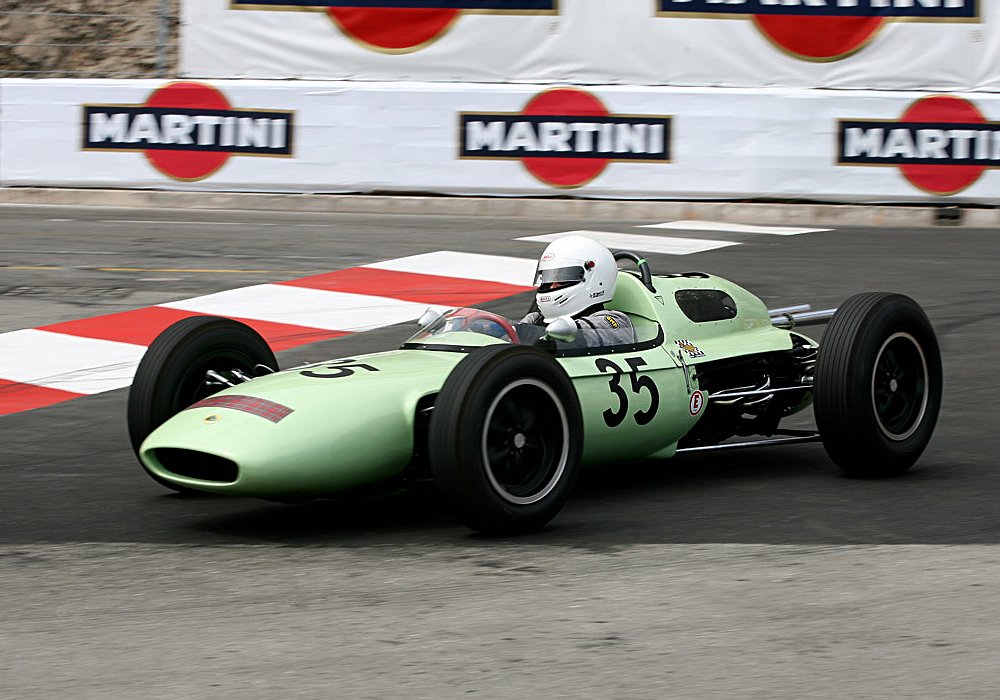Description
The Lotus 24 Climax F1 was one of the last traditional spaceframe Formula One cars produced by Lotus before the revolutionary monocoque Lotus 25 rendered the old construction method obsolete. Introduced for the 1962 Grand Prix season, the Lotus 24 was built as a parallel design to the 25, intended primarily for customer teams, while Lotus kept the more advanced monocoque chassis for its own works entries. Even so, the 24 was a fast, elegant, and competitive machine in its own right, and the Climax-engined versions were the most prestigious and effective of the type.
The 24 used a multi-tubular steel spaceframe chassis, a design Chapman had refined over several years. It was light, compact, and relatively easy to service, with its narrow diameter tubing triangulated for strength. Although the design lacked the stiffness of the soon-to-emerge monocoque Lotus 25, it was still advanced for the time and well suited to the new 1.5-litre Formula One rules introduced in 1961. The chassis was designed to accommodate either Coventry Climax or BRM V8 engines, making the 24 highly attractive to privateer entrants.
The Climax-powered cars were fitted with the Coventry Climax FWMV, a 1.5-litre 90-degree V8 producing approximately 185 horsepower in early specification. This engine was extremely compact, lightweight, and refined, delivering smooth power delivery and strong performance at high revs. Mounted in the mid-engine position — by then already fundamental to Lotus design — the Climax V8 gave the Lotus 24 a good balance between power, weight distribution, and reliability. Power was transmitted through a five-speed Colotti or ZF transaxle depending on customer choice.
Suspension followed proven Lotus practice. At the front, unequal-length double wishbones with coil springs and telescopic dampers provided sharp steering and stable geometry. At the rear, lower wishbones, upper links, and twin radius arms supported the transaxle and ensured good traction out of corners. Four Girling disc brakes delivered consistent stopping power, and the steering was light, direct, and communicative. The entire package reflected Chapman’s belief in simplicity, efficiency, and low mass.
The aluminium bodywork was typically elegant and understated, with a low, pointed nose, faired-in front suspension, and a slim, narrow cockpit. The dimensions were kept as compact as possible to reduce frontal area, and the driver sat in a reclined position to help airflow and lower the centre of gravity. At just over 455 kilograms ready to race, the 24 was extremely light, giving it a strong power-to-weight ratio despite the modest 1.5-litre engine capacity.
The Lotus 24 made a promising debut in the early part of the 1962 season. Jim Clark finished second at the Dutch Grand Prix in a Climax-engined works entry, demonstrating the car’s potential. However, once the Lotus 25 appeared later that same year, it became clear that the spaceframe chassis of the 24 had already been overtaken by the monocoque revolution. Chapman immediately prioritised development of the 25, and the 24 was quickly reassigned to privateer teams such as UDT Laystall, Rob Walker Racing, BRP, and others.
Even so, the Lotus 24 Climax remained competitive throughout 1962 and into 1963. In experienced hands, it regularly scored points and challenged for podiums. Its consistency and predictable handling made it popular with privateers who prized its balance, straightforward mechanical layout, and access to the excellent Climax V8. The car’s reliability and user-friendliness allowed many smaller teams to contest full seasons without factory support.
Although overshadowed by the monocoque Lotus 25, the 24 played an important transitional role. It allowed Lotus to offer customer cars while developing the breakthrough 25 in secret. It also represented the culmination of Chapman’s spaceframe-era philosophy — light, cleverly packaged, and aerodynamically efficient, yet still handmade in the classic Grand Prix tradition.
Only around nine to eleven Lotus 24 chassis were built, making the model relatively rare today. The Coventry Climax-engined examples remain the most desirable, representing the car in its purest and most competitive form.
The Lotus 24 Climax F1 stands as a symbol of a turning point in Formula One engineering. It was the last of the successful spaceframe Lotuses and the car that bridged the gap between the traditional construction methods of the 1950s and the revolutionary monocoque era that Lotus itself would pioneer. Elegant, fast, and historically important, the Climax-powered 24 marks the end of one chapter and the beginning of another in the story of Lotus and modern Grand Prix design.
